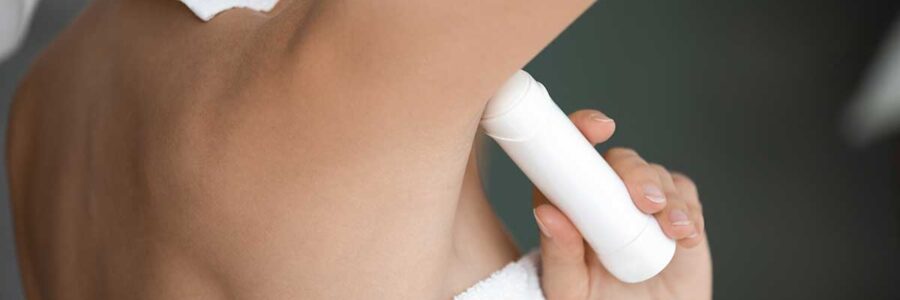Each day begins with the routine application of deodorant for countless individuals, a simple act taken for granted to maintain freshness. However, the contents of these ubiquitous products are seldom scrutinized despite their potential to inflict significant health hazards. The quest for odorless underarms might come at an unforeseen cost, encompassing everything from skin irritations to hormonal disturbances and possible cancer links. This prompts a critical examination of the less-discussed aspects of deodorant use and the compelling case for natural alternatives.
Key Concerns in Standard Deodorants
Central to the debate are certain ingredients prevalent in deodorants and antiperspirants. Aluminum compounds, tasked with sweat prevention, are implicated in Alzheimer’s disease and breast cancer risks.[1,2] Parabens, serving as preservatives, might mimic estrogen, potentially skewing hormonal balance.[3] Phthalates, which enhance consistency and penetration, are linked to reproductive health issues.[4] Previously favored for its antibacterial properties, Triclosan is believed to foster antibiotic resistance and interfere with hormonal functions.[5] Additionally, synthetic fragrances could instigate allergies and dermatitis.[6] The individual risks associated with these components urge a reassessment of the perceived benefits of traditional deodorants.
Implications of Harmful Deodorant Ingredients
Immediate reactions to these chemicals can vary from mild skin irritation to severe allergic responses and chemical burns in susceptible individuals.[1-6] Yet, it’s the prolonged exposure that amplifies concerns, with studies indicating a possible association between these substances and elevated breast cancer risks, particularly given the application area’s proximity to the breast.[1-5] Disruptions in hormonal balance due to parabens and phthalates might also impact fertility and overall reproductive health.[3] These alarming potential consequences have intensified the demand for safer alternatives.
Advantages of Natural Options
Natural deodorants address odor and moisture without relying on detrimental chemicals. They utilize clay and activated carbon ingredients for moisture absorption and odor neutralization. Sodium bicarbonate (baking soda) offers a natural solution to odor control sans the adverse effects of aluminum. Arrowroot powder enhances moisture absorption, and essential oils provide natural antibacterial benefits and pleasant aromas.[7] These natural ingredients collectively ensure freshness while promoting the body’s inherent detoxification mechanisms.
Adopting Natural Deodorants
The transition to natural deodorants can entail an adjustment phase characterized by increased sweating or a temporary intensification of body odor as the body adapts to the absence of aluminum-based sweat blockage. This phase is generally short-lived. Selecting a natural deodorant should consider individual skin types, activity levels, and scent preferences, with numerous DIY formulations available for personalized concoctions. Opting for natural deodorants favors personal health and aligns with eco-friendly and toxin-reduced living principles.
Dispelling Natural Deodorant Myths
There are several myths surrounding natural deodorants that might hinder people from switching, such as:
Myth 1: Natural Deodorants Lack Efficacy
Contrary to this belief, many natural deodorants are effectively formulated with potent odor-neutralizing components like baking soda, activated charcoal, and essential oils, capable of maintaining freshness throughout the day. Success hinges on finding a formula that complements one’s body chemistry.
Myth 2: Increased Sweating with Natural Deodorants
It’s crucial to differentiate between antiperspirants and deodorants. Antiperspirants, typically containing aluminum, aim to block sweating, whereas natural deodorants focus on odor control, allowing the natural sweating process. Initial increased sweating is normal and tends to stabilize over time.
Myth 3: Higher Risk of Skin Irritation with Natural Deodorants
In fact, natural deodorants are usually milder due to the absence of harsh chemicals like parabens, synthetic fragrances, and aluminum. Components such as coconut oil and shea butter can moisturize the skin. For those sensitive to baking soda, alternatives without this ingredient are available.
Conclusion
Switching to natural deodorants represents a significant stride towards healthier living and environmental care. By choosing products with benign, natural ingredients, one can avoid the health hazards linked with conventional deodorants while supporting ecological well-being. Although the transition may involve an initial adaptation period, the long-term health and environmental benefits of embracing natural deodorants are substantial, contributing to the growing trend towards a toxin-free lifestyle.
References:
- Kawahara, Masahiro, and Midori Kato-Negishi. “Link between Aluminum and the Pathogenesis of Alzheimer’s Disease: The Integration of the Aluminum and Amyloid Cascade Hypotheses.” International Journal of Alzheimer’s disease vol. 2011 276393. 8 Mar. 2011, doi:10.4061/2011/276393
- “Antiperspirants and Breast Cancer: Is There a Link?” Environmental Working Group, 25 Jan. 2024, www.ewg.org/news-insights/news/antiperspirants-and-breast-cancer-there-link. Accessed 04 Feb. 2024.
- Engeli, Roger T et al. “Interference of Paraben Compounds with Estrogen Metabolism by Inhibition of 17β-Hydroxysteroid Dehydrogenases.” International journal of molecular sciences vol. 18,9 2007. 19 Sep. 2017, doi:10.3390/ijms18092007
- Wang, Yufei, and Haifeng Qian. “Phthalates and Their Impacts on Human Health.” Healthcare (Basel, Switzerland) vol. 9,5 603. 18 May. 2021, doi:10.3390/healthcare9050603
- Yueh, Mei-Fei, and Robert H Tukey. “Triclosan: A Widespread Environmental Toxicant with Many Biological Effects.” Annual Review of Pharmacology and Toxicology vol. 56 (2016): 251-72. doi:10.1146/annurev-pharmtox-010715-103417
- van Amerongen, Cynthia C A et al. “Skin exposure to scented products used in daily life and fragrance contact allergy in the European general population – The EDEN Fragrance Study.” Contact dermatitis vol. 84,6 (2021): 385-394. doi:10.1111/cod.13807
- Pattnaik, S et al. “Antibacterial and antifungal activity of ten essential oils in vitro.” Microbios vol. 86,349 (1996): 237-46.


